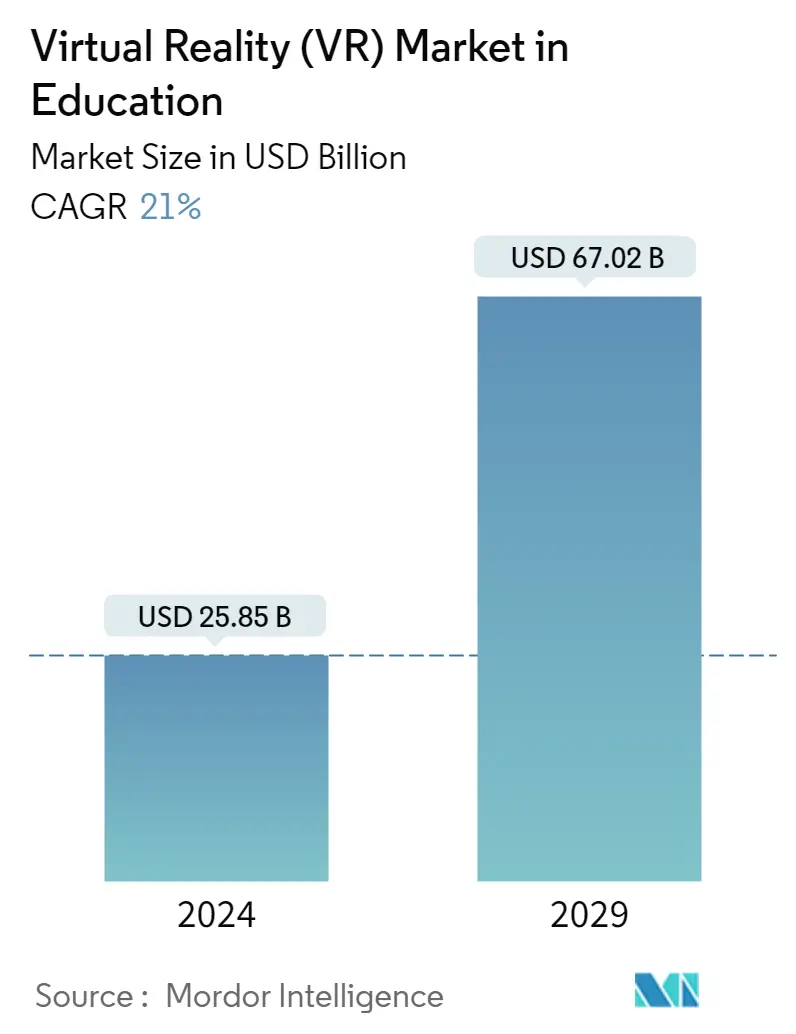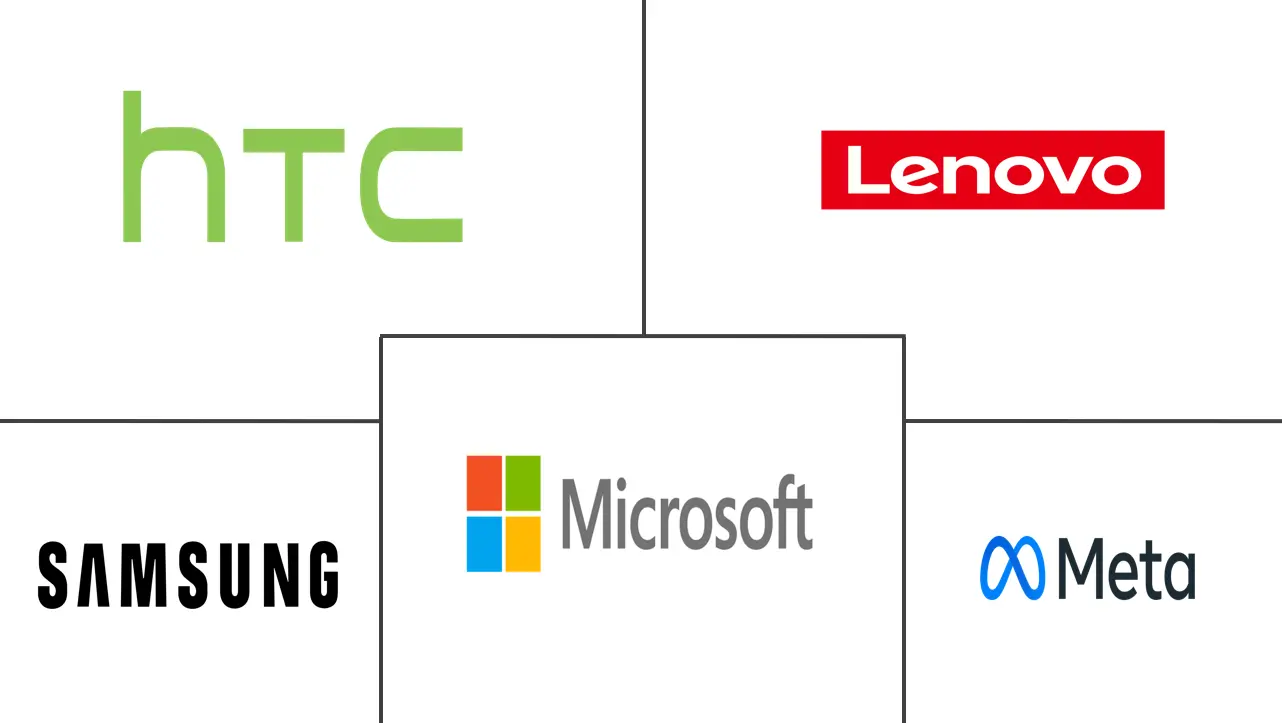Market Size of Virtual Reality (VR) Industry in Education

| Study Period | 2019 - 2029 |
| Market Size (2024) | USD 25.85 Billion |
| Market Size (2029) | USD 67.02 Billion |
| CAGR (2024 - 2029) | 21.00 % |
| Fastest Growing Market | North America |
| Largest Market | North America |
Major Players
*Disclaimer: Major Players sorted in no particular order |
Need a report that reflects how COVID-19 has impacted this market and its growth?
Virtual Reality (VR) in Education Market Analysis
The Virtual Reality Market in Education Industry is expected to grow from USD 25.85 billion in 2024 to USD 67.02 billion by 2029, at a CAGR of 21% during the forecast period (2024-2029).
VR technology has gained widespread recognition and adoption over the past few years. Recent technological advancements in this field have revealed new enterprises and adoption among major universities, colleges, and schools for advanced learning experiences. In addition, the market is expected to gain significant demand from corporations for corporate learning programs in the coming years.
- Virtual reality has gained significant traction in the education world over the past few years. It offers learners an immersive experience: they can learn complicated subject matters by entering a reality-imitating virtual world where they can move, talk, make decisions, and interact with the world around them. Such an instance led to increased demand for virtual reality in education.
- Educational institutions have started incorporating practical learning through excursions, lab experiments, group activities, and projects. The introduction of virtual reality in education has taken learning to an entirely new dimension. Immersive learning through Virtual Reality has proven to be an effective tool for expanding knowledge. It delivers digitally created information and situations that mirror real-life experiences that are mostly inaccessible to learners in traditional school settings.
- Many companies are making learning interactive and more engaging through VR technologies by adding gaming elements to textbook material. For instance, Curiscope's Virtuali-tee is a t-shirt and app that lets users learn about the human body. One person puts on the t-shirt while the other uses a virtual reality app on a smartphone to virtually reveal and explore the various layers inside the body.
- Further, VR is finding extensive applications in biology, with universities and colleges worldwide using virtual reality headsets for immersive learning. For instance, last year, students at Arizona State University were learning biology in a unique virtual reality experience, hurtling through space to interact with creatures in an intergalactic wildlife sanctuary the size of a small city and to solve the mystery of why the animals are dying.
- During the COVID-19 lockdown, technologies like AR, VR, and MR witnessed significant demand as they allowed people to shop, talk, and socialize using these immersive platforms. The COVID-19 pandemic moved learners and young students out of the classroom and into the virtual world of remote education. Many universities and schools are now taking advantage of virtual reality technology to improve access to education, both in terms of helping pupils with learning difficulties or disabilities and making learning less location-dependent.
